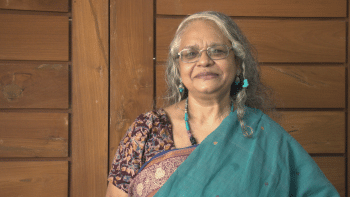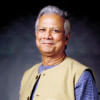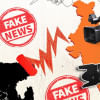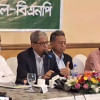Can the media be equal for all genders?

These days, there seems to be a perception that we no longer need to talk about gender equality in our day-to-day lives. Those who still try to bring up the issue are usually the activists, development workers or the designated government officials responsible for women's affairs. And obviously, there is a common misperception that women are being given more – and often "undeserved" – opportunities these days, and they are not worthy of having equal rights as their male counterparts. Third gender, or any other gender identity, outside of the male-female identities – are not even mentioned.
Recently, MRDI, a leading media development organisation in Bangladesh, conducted a brief media monitoring on gender representation during the recently concluded annual 16 Days of Activism against Gender-Based Violence campaign. Though it was only a seven-day-long monitoring of news content in 10 selected news outlets, the exercise provided us with a snapshot of a greater media landscape.
The outcome of this monitoring exercise is staggering. With more than 5,000 news write-ups monitored in those seven days, women were present only in 14 percent of said content – be it as the subject of the content, or as mentioned, quoted, interviewed in any way, and if the stories are concerned with gender issues. And if we look at women as content creators, only eight percent of the articles (with by-line, features and op-eds) were produced by women.
In a country where women outnumber men in the total population (according to the latest census in June 2022), how is this still the state of affairs?
Of course, there are understandable reasons behind these findings. A recent study, also conducted by the MRDI as a part of a global research by FOJO Media Institute, Sweden, shows the big gap between male and female journalists. Although it is difficult to find the actual ratio as there is no official count of journalists, we can guess from the lists provided by some Dhaka-based journalist associations such as Dhaka Union of Journalists (DUJ) and Dhaka Reporters Unity (DRU). According to DUJ, nine percent of enlisted journalists could be women, judging by their names. DRU said of their total members, seven percent were women.
More than 500 newspapers are published from Dhaka, but only two of them have female editors. And most of the newsrooms have very few women in decision-making levels. In interviews and group discussions conducted under the study, women journalists mentioned that while mid-ranking women managers in TV media are slowly rising, a glass ceiling is very much there. Qurratul-Ain-Tahmina, the lead researcher of the study, concluded that the media landscape of Bangladesh is still quite male-dominated.
So is our society. Then why should the media be anything different? Because journalism at its core is dedicated to public interest. And when more than half of the population is women, one cannot do quality journalism by ignoring their interests. And the media also has their stake in this. By reaching out to women, it can expand their audience at a time when news outlets are struggling to keep their audience. Media houses need to represent the society better in order to be more relevant.
And to reach out to a women audience will require audience research. At present, we see pages dedicated to women in newspapers or TV programmes targeting women usually to feature life-style stories such as cooking, fashion, relationship or entertainment. It is not fair to think that half of our population is only interested in these. No need to mention that the targeted women audience here are mostly urban. For rural women, the media seems to allocate even less space. They are generally the least engaged news users. And they don't see themselves represented anywhere in the news except probably as the victims of murder, rape, harassment or maybe of any environmental disaster.
The portrayal of women in the media in general is also unacceptable. It seems society is changing more quickly than the media. We still like to see women only as the vulnerable part of the society. Whenever there is an accident, we see women crying in the news. Whenever we see reports on gas or water crises, it seems only the women are suffering. And, while working women can be found in every sector in our country, we still don't see them much in the news. The monitoring exercise also found that only 3.5 percent women as experts were quoted in news stories.
Gender representation in the media cannot be achieved through activism, however; it needs long-term strategy and advocacy, because the task is to change the mindset of the newsroom and the owners first. Then the media can contribute to changing the mindset of society, by breaking the stereotypes, promoting gender equality.
And the media is not the only stakeholder here. The Ministry of Information, Press Institute, Press Council, Universities Grants Commission (UGC) and relevant institutions need to have a common road map to achieve the goal. Media laws and regulations in Bangladesh lack a requirement for equal coverage of women or other gender minorities in media content. Sector-wide self-regulatory frameworks are also very rare. More stress on having policies, especially within media organisations is needed. This includes self-regulation in the digital platforms as well.
Journalism schools can also contribute a lot in this aspect. They can consider if the classroom is accommodating the demands of the newsroom, to review the curriculum to see if there is anything we can add to enable the journalism students to be more gender-concerned in a practical approach.
And above all, we all need to be on the same page, aspiring towards the fullest extent of freedom of expression, so that women or other vulnerable genders can also enjoy equal rights.
Sarwat Tarannum Nadia is the gender focal of a project aiming at improving quality journalism in Bangladesh, implemented by MRDI. She has worked as a journalist in print and electronic media for more than a decade.

 For all latest news, follow The Daily Star's Google News channel.
For all latest news, follow The Daily Star's Google News channel. 









Comments